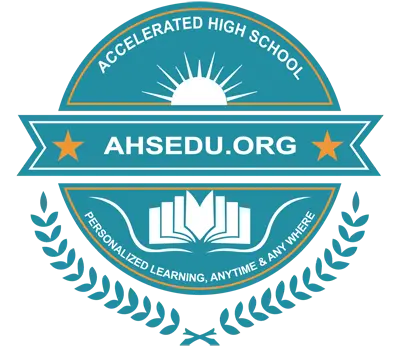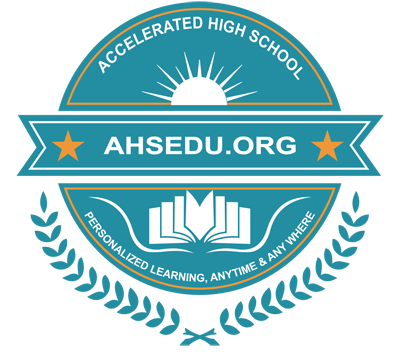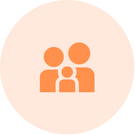Accelerated High School
Standardized Curriculum of Computer Science-I
Becoming familiar with the practices and cross-cutting concepts in computer science is a crucial initial step in designing learning experiences reflective of the three dimensions of computer science education. Computer science practices involve skills such as computational thinking, collaboration, and problem-solving while cross-cutting concepts include abstraction, patterns, and algorithmic thinking. To develop proficiency in the New Jersey Student Learning Standards for Computer Science (NJSLS-CS), students must engage in learning experiences that are meaningful, cumulative, and progressive. These experiences should extend beyond mere reading about coding concepts, providing active learning opportunities for students to comprehend and apply ideas. Cumulative experiences enable students to build upon prior knowledge, while progressive experiences foster continuous improvement through iterative assessment, elaboration, and critique, ultimately enhancing students' ability to construct explanations and solutions in computer science.
Mission:
All students have equitable access to a rigorous computer science education. Students will benefit from opportunities to engage in high-quality technology programs that foster their ability to develop and apply computational thinking to address real-world problems and design creative solutions.
Vision:
Prepare students to become technologically literate individuals who can effectively:
- Understand Basic Computer Concepts: Gain a foundational understanding of computers, their different parts, and the purpose of each component.
- Develop Software and Hardware Knowledge: Differentiate between software and hardware, and learn the basics of each, including internal components such as the CPU, RAM, and storage.
- Internet Safety: Learn essential internet safety practices to navigate the digital world securely and responsibly.
- Solve Critical Challenges Using Technology: Apply computational thinking and problem-solving skills to address real-world issues, leveraging the power of computing technology.
- Adapt to Rapidly Changing Technologies: Stay informed and adaptable in a world where technological advancements continually transform learning, working, and everyday life.
- Engage in Discussions and Investigations: Participate in discussions and conduct investigations to solve problems, focusing on the strength of evidence used to generate claims.
- Evaluate Digital Information Sources: Read and critically evaluate multiple sources, including technology-related articles and web-based resources, to understand current and past technological problems and solutions, and develop well-reasoned claims.
- Communicate Technological Ideas: Effectively communicate ideas through reports, presentations, and digital media that explain and argue technological concepts and solutions.
This vision aims to equip students with the knowledge and skills necessary to thrive as well-educated, globally-minded individuals in a world where computing technology is essential.
Spirit and Intent:
The skills taught at Accelerated High School (AHS) are in harmony with various educational standards, including the New Jersey Student Learning Standards for Computer Science [NJSLS-CS] implemented in 2023, the Student Learning Standards for Career Readiness, Life Literacies, and Key Skills as well as the Student Learning Standards for Personal Financial Literacy and the New Jersey Preschool Teaching and Learning Expectations. This comprehensive alignment ensures thorough coverage of computer science concepts and their practical applications. Leveraging AHS's state standards alignments, students can access a wealth of practice questions meticulously designed to target each specified standard, facilitating effective learning and skill mastery.
Three Dimensions of AHS Science Curriculum:
The performance expectations reflect the three dimensions and describe what students should know and be able to do. In layman’s terms, they are “the standards.” They are written as statements that can be used to guide assessment and allow for flexibility in the way that students can demonstrate proficiency. The example below is provided to illustrate the interconnected nature of the NJSLS-S components.
Computer Science Core Idea
|
Disciplinary Core Idea |
Performance Expectation |
|
Understand Basic Computer Concepts |
Identify different parts of a computer and their purposes. |
Computer Science and Engineering Practice
|
Computer Science and Engineering Practice |
Performance Expectation |
|
Engage in Discussions and Investigations |
Participate in computing and internet safety discussions. Conduct investigations to generate evidence-based claims. |
Crosscutting Concept
|
Crosscutting Concept |
Performance Expectation |
|
Adapt to New Technologies |
Learn about new technologies and how to use them. |
Becoming familiar with computer science practices and cross-cutting concepts is a crucial initial step in designing learning experiences reflective of the three dimensions of computer science education. Computer science practices involve skills such as computational thinking, collaboration, and problem-solving while cross-cutting concepts include abstraction, patterns, and algorithmic thinking. To develop proficiency in the New Jersey Student Learning Standards for Computer Science (NJSLS-CS), students must engage in learning experiences that are meaningful, cumulative, and progressive. These experiences should extend beyond mere reading about coding concepts, providing active learning opportunities for students to comprehend and apply ideas. Cumulative experiences enable students to build upon prior knowledge, while progressive experiences foster continuous improvement through iterative assessment, elaboration, and critique, ultimately enhancing students' ability to construct explanations and solutions in computer science.
Curriculum for Grade-I Computer Science:
Standard 1: Computing device
Learning objectives:
- Individuals use computing devices to perform a variety of tasks accurately and quickly.
- Individuals collect, use, and display data about individuals and the world around them.
- People work together to develop programs for a purpose, such as expressing ideas or addressing problems.
Topics of AHS-CS:
A. Introduction to Computer
- Understand the basic concept of computer.
- Identify the different parts of a computer (monitor, CPU, keyboard, mouse).
- Learn the purpose of each computer component.
Standard 2. Input device
Learning Objectives:
- Computing devices interpret and follow the instructions they are given.
- Individuals collect, use, and display data about individuals and the world around them.
Topics of AHS-CS:
B. Mouse and Keyboard Skills
- Develop a basic mouse.
- Develop basic keyboard skills
- Practice clicking and right-clicking
- Practice double-clicking and dragging.
- Practice left-clicking
- Learn the layout of the keyboard and practice typing simple words.
Standard 3. Software
Learning Objectives:
- A computing system is composed of software.
- Computing devices interpret and follow the instructions they are given literally.
Topics of AHS-CS:
C. Introduction to Software
- Understand the concept of software.
- Differentiate between software and hardware.
- Identify common software applications (word processor, web browser, drawing program).
Standard 4. Hardware
Learning Objectives:
- A computing system is composed of hardware.
- Computing devices interpret and follow the instructions they are given.
- Computers store data that can be retrieved later. Data can be copied, stored in multiple locations, and retrieved.
Topics of AHS-CS:
D. Introduction to Basic Computer Hardware
- Explore the basic internal components of a computer (CPU, RAM, storage).
- Understand the role of hardware in the functioning of a computer.
- Learn about the importance of taking care of computer equipment.
Standard 5. Internet
Learning Objectives:
- Computer networks can be used to connect individuals to other individuals, places, information, and ideas. The Internet enables individuals to connect with others worldwide.
- Connecting devices to a network or the Internet provides great benefits, but care must be taken to use authentication measures, such as strong passwords, to protect devices and information from unauthorized access.
- The ability to ethically integrate new technologies requires deciding whether to introduce technology, considering local resources and the role of culture in acceptance.
Topics of AHS-CS:
E. Internet Safety
- Learn the importance of internet safety.
- Understand basic rules for online behavior.
- Identify and avoid unsafe websites and activities.
Standard 6. Coding
Learning Objectives:
- Individuals develop and follow directions as part of daily life.
- A sequence of steps can be expressed as an algorithm a computer can process.
- Real-world information can be stored and manipulated in programs as data (e.g., numbers, words, colors, images).
- Computers follow precise sequences of steps that automate tasks.
Topics of AHS-CS:
F. Animated Art
- Animated name
- Make your sprite fly
- Make your sprite glide around
- Spinning of Sprite
- Animate a sprite
- Adding Effects to your Sprite
Standard 7. Programming Language
Learning Objectives:
- Individuals develop and follow directions as part of daily life.
- The program development involves identifying a sequence of events, goals, and expected outcomes, and addressing errors (when necessary).
- A sequence of steps can be expressed as an algorithm a computer can process.
- Computers follow precise sequences of steps that automate tasks.
- Real-world information can be stored and manipulated in programs as data (e.g., numbers, words, colors, images).
- Computers follow precise sequences of steps that automate tasks.
- Programming languages provide variables, which are used to store and modify data.
- Topics of AHS-CS:
Topics of AHS-CS:
G. Programming Language
Java







